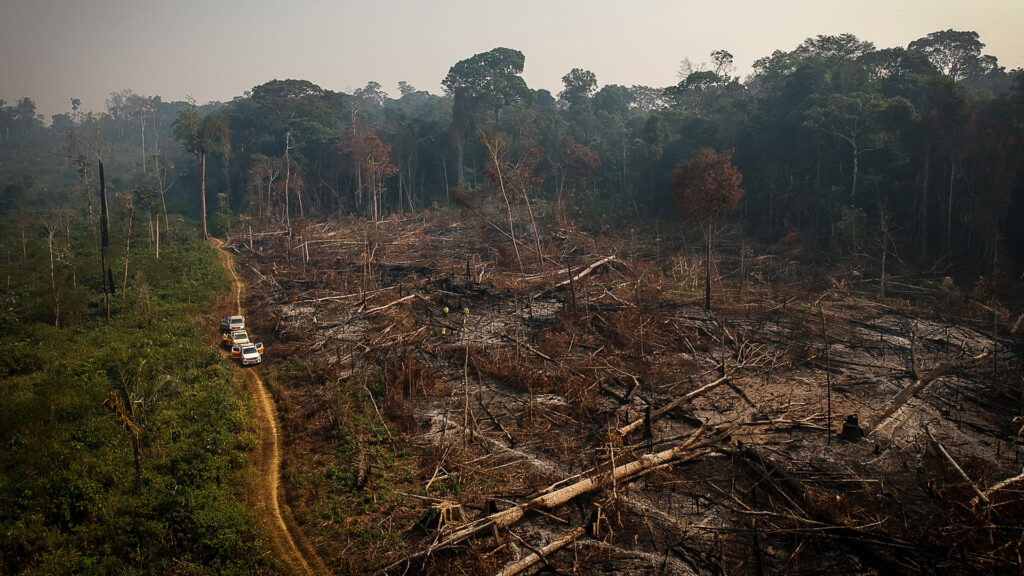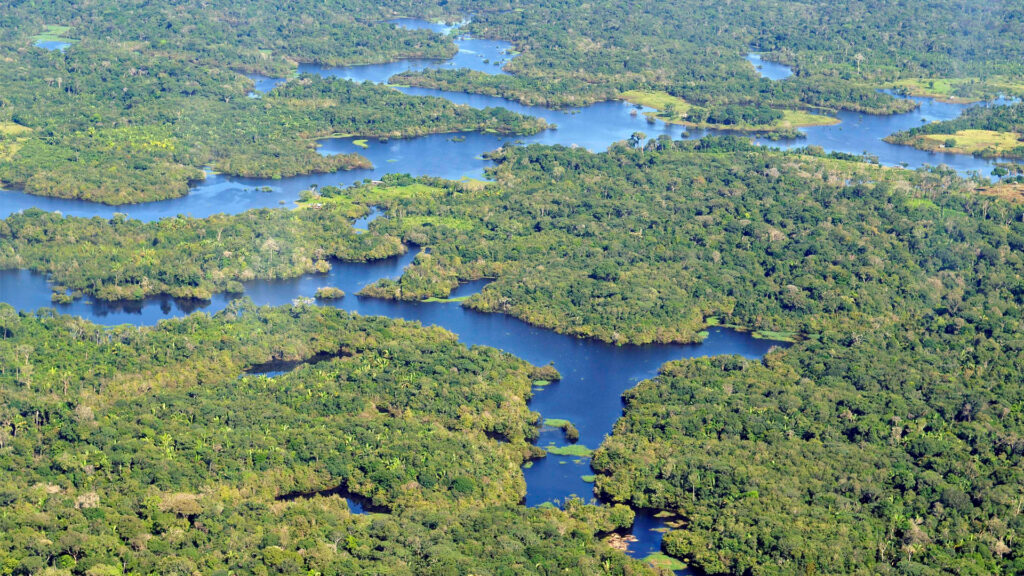Editor’s note: The Invading Sea is increasing the number of pieces published with an international focus over the holidays, including news articles from Mongabay.com. Mongabay is a nonprofit environmental science and conservation news platform that produces original reporting in English, Indonesian, Spanish, French, Hindi and Brazilian Portuguese by leveraging more than 800 correspondents in about 70 countries
By Maurício Brum and Lucas Berti, Mongabay
Between 15% and 18% of the least-studied areas in the Brazilian Amazon are at high risk of severe climate and land-use changes by 2050, research has shown, meaning we could lose these ecological communities before we even get a chance to understand them.
A recent study in Current Biology shows that as the world’s most diverse rainforest, the Amazon remains insufficiently represented in biodiversity databases, as several biases continue to limit where research is carried out across the region.
Focusing on the Brazilian Amazon, which accounts for about 60% of the Amazon Basin, the researchers looked at 7,694 sites and data from 2010-2020 to determine how human influence and logistics have determined the likelihood of research being done in those places.

“Among the areas that are most neglected in ecological research, there are places where we don’t even know the current state of biodiversity,” said study co-author Mario Ribeiro de Moura, an ecologist researcher at the State University of Campinas. “In that sense, before talking about impact mitigation, we first need to talk about identification.”
He and his team first looked into “the previous state of biodiversity to determine what has been lost and gained in these areas to create these sites’ ‘before and after,’” he told Mongabay. “Picturing the current ecological state of these areas is particularly noteworthy considering that the scientific community relies on limited resources. Conservation requires accuracy.”
An estimated 23.5% of the Brazilian Amazon is already deforested, while 27.3% is projected to be deforested by 2050. The researchers found that research is more likely to happen in places that are already deforested than in those projected to be cleared by 2050, as research appears to happen more in human-modified landscapes. Looking at nine different groups of plants and animals and three major habitat types, they also found research gaps in 54.1% of unflooded areas or uplands, 27.3% of aquatic habitats, and 17.3% of wetlands.
“Areas most prone to climate change and degradation or deforestation must be identified before it is too late,” said study co-author Angélica Resende, a botanist at Brazil’s National Institute for Amazonian Research (INPA). “These ecosystems can collapse in different ways, whether due to prolonged droughts, drought-induced fires, warming, or even storms.” In terms of conservation, ecology research should act “both to protect and to recover” these sites, she told Mongabay.
Reducing research biases
Nearly two-thirds of the differences in research coverage can be explained by elements such as accessibility to forest sites and remoteness of research facilities, as well as by land tenure, degradation, and the length of the dry season.

Logistics are a major limiting factor for research, given the Amazon’s size and geographic diversity, said Magno Botelho Castelo Branco, a climate change professor at Mackenzie Presbyterian University in Sao Paulo, who analyzed the study’s findings at Mongabay’s request. The problem gets worse when combined with limited resources, he said.
“Some places (in the Brazilian Amazon), for instance, could only be reached by helicopter, whose per-hour use costs no less than $2,000. When we calculate the time and effort required to transport researchers, we see that investment in ecological research must expand exponentially,” Castelo Branco told Mongabay. “It is indeed not cheap to carry out research and obtain quality data in regions that are difficult to access.”
One way to overcome these obstacles, the researchers say, is to set up new research centers near little-studied areas. Although noting that such efforts could mean “a more logistically demanding approach,” they say multiple longer-term benefits could emerge from these initiatives, including the training of local researchers, and more detailed, prolonged scientific analysis.
“Enhancing ecological research in these remote regions could be the sole chance to unveil pieces of the Amazon’s biodiversity puzzle before they succumb to human-induced modifications,” the study says.
Indigenous communities could help
Indigenous lands represent about 23% of the Brazilian Amazon, yet there’s a major ecological knowledge gap here compared to strictly protected areas or sustainable use reserves, the study says. Indigenous areas have also been increasingly threatened by illegal activities such as logging, invasions and mining, largely stemming from the dismantling of environmental policies under former president Jair Bolsonaro, according to most sources interviewed for this story.
“We can’t talk about creating conservation policies if we don’t involve local communities,” Ribeiro de Moura said. “Social inequalities and the lack of representation of Indigenous people are not just in science, and this must be confronted in order to seek a better environment research coverage.”
The study stresses that Indigenous traditional practices should be included in research methodologies, while the process of gathering knowledge should be equitable and decolonial, a co-creation process where Indigenous communities are peers.
Resende said Brazil’s change of government and the creation of the country’s first Ministry for Indigenous Peoples could shift things in that direction, encouraging a greater knowledge exchange with communities in order to understand how to better protect the Amazon.
“The traditional knowledge of Indigenous peoples has proven to be very efficient in protecting the environment,” she told Mongabay. This is critical, she added, as “we are at risk of losing several ecosystems that are still unknown.”
This piece was originally published at https://news.mongabay.com/2023/12/least-studied-areas-of-brazilian-amazon-at-high-risk-from-climate-change/.
Sign up for The Invading Sea newsletter by visiting here. If you are interested in submitting an opinion piece to The Invading Sea, email Editor Nathan Crabbe at ncrabbe@fau.edu.



